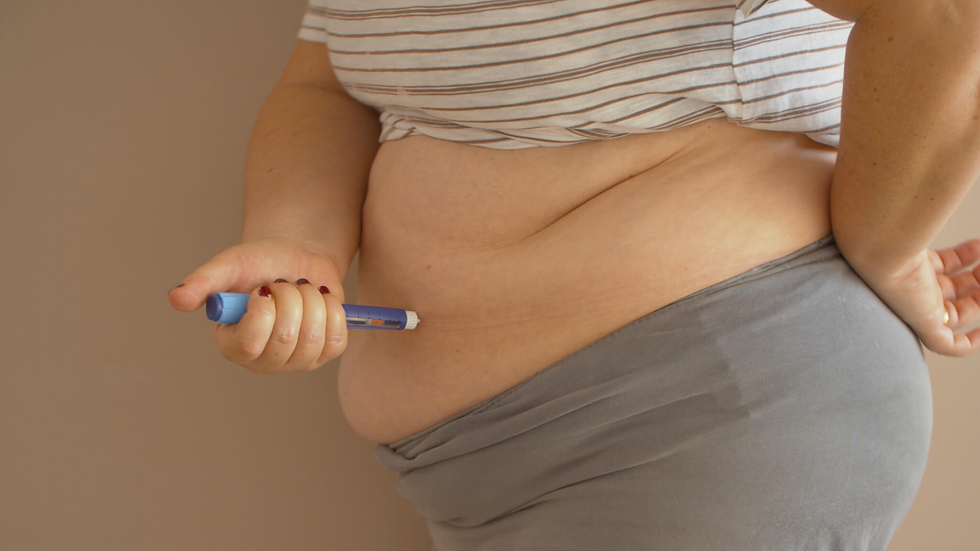The Complete Guide to Hair Loss Recovery in Dubai From Diagnosis to Treatment
- kishwar adnan
- Aug 20, 2024
- 3 min read
Hair loss can be a distressing experience for many individuals, affecting self-esteem and overall quality of life. In Dubai, a city known for its advanced medical facilities and diverse treatment options, residents facing Hair Loss Treatment In Dubai have access to various recovery solutions. This comprehensive guide outlines the journey from diagnosis to treatment, helping you understand the process of hair loss recovery.
1. Understanding Hair Loss
Types of Hair Loss
Before seeking treatment, it's essential to understand the different types of hair loss:
Androgenetic Alopecia: Commonly referred to as male or female pattern baldness, this genetic condition is the most prevalent cause of hair loss.
Alopecia Areata: An autoimmune disorder that causes sudden patchy hair loss.
Telogen Effluvium: Temporary hair loss often triggered by stress, hormonal changes, or nutritional deficiencies.
Common Causes
Hair loss can result from various factors, including:
Genetics: Family history can play a significant role in hair loss patterns.
Hormonal Changes: Conditions such as pregnancy, menopause, or thyroid disorders can impact hair health.
Stress: Physical or emotional stress can lead to temporary hair loss.
Nutritional Deficiencies: A lack of essential vitamins and minerals can contribute to thinning hair.
2. Diagnosis of Hair Loss
Initial Consultation
The first step in your hair loss recovery journey is scheduling a consultation with a qualified specialist. In Dubai, you can find dermatologists and trichologists who specialize in hair loss.
Diagnostic Procedures
During the consultation, the specialist may perform several diagnostic procedures, including:
Medical History Review: Discussing your family history, lifestyle, and any underlying health conditions.
Physical Examination: Assessing the scalp and hair to identify patterns of hair loss.
Blood Tests: Checking for hormonal imbalances, nutritional deficiencies, or underlying medical conditions.
Scalp Biopsy: In some cases, a small sample of the scalp may be taken to examine the hair follicles under a microscope.
3. Treatment Options for Hair Loss
Once diagnosed, the next step is exploring suitable treatment options. In Dubai, a range of treatments is available, both surgical and non-surgical.
Non-Surgical Treatments
Topical Treatments
Minoxidil: An over-the-counter topical solution that stimulates hair growth and prevents further hair loss. It is suitable for both men and women.
Oral Medications
Finasteride: An FDA-approved medication that reduces the hormone DHT, which contributes to hair loss in men.
Platelet-Rich Plasma (PRP) Therapy
Description: A non-invasive treatment that involves drawing your blood, processing it to concentrate the platelets, and injecting it into the scalp to stimulate hair growth.
Benefits: Promotes natural hair growth with minimal downtime.
Low-Level Laser Therapy (LLLT)
Description: A non-invasive treatment that uses specific wavelengths of light to stimulate hair follicles.
Benefits: Increases blood circulation and cellular activity in the scalp.
Surgical Treatments
Hair Transplantation
Follicular Unit Transplantation (FUT): Involves removing a strip of scalp from the donor site and transplanting individual hair follicles.
Follicular Unit Extraction (FUE): Involves extracting individual hair follicles directly from the scalp and transplanting them to the balding areas.
Benefits: Provides permanent and natural-looking results, suitable for individuals with significant hair loss.
Choosing the Right Treatment
Factors to Consider
When selecting a treatment option, consider the following:
Extent of Hair Loss: Severe hair loss may require surgical intervention, while early stages might respond well to non-surgical treatments.
Budget: Assess the costs associated with different treatments. Surgical options tend to be more expensive than non-surgical ones.
Desired Results: If you seek immediate results, surgical options may be more appealing, whereas non-surgical treatments may take time to show effects.
Consultation with Experts: Discuss your options with a specialist who can provide personalized recommendations based on your unique situation.
Post-Treatment Care
Follow-Up Appointments
Regular follow-up appointments with your specialist are crucial to monitor progress and make any necessary adjustments to your treatment plan.
Maintenance and Lifestyle Adjustments
Hair Care: Use gentle hair care products and avoid heat styling tools that can damage hair.
Nutrition: Maintain a balanced diet rich in vitamins and minerals to support hair health.
Stress Management: Incorporate stress-reducing practices, such as yoga or meditation, into your routine.
Emotional Support
Coping with Hair Loss
Experiencing hair loss can be emotionally challenging. Consider seeking support from:
Support Groups: Connecting with others facing similar challenges can provide comfort and understanding.
Counseling: Professional counseling can help address emotional distress and boost self-esteem.
7. Conclusion
Hair loss recovery in Dubai encompasses a comprehensive approach that begins with diagnosis and extends to various treatment options. Understanding the causes of hair loss, exploring suitable treatments, and maintaining post-treatment care are essential steps toward achieving your desired results. With the right guidance and support, individuals facing hair loss can regain their confidence and enjoy healthier hair. If you're experiencing hair loss, consult with a specialist today to embark on your recovery journey.








Comments